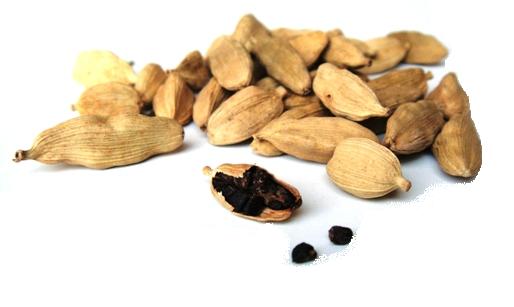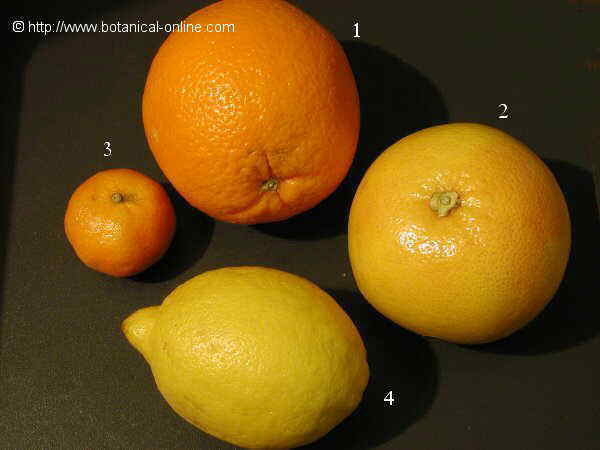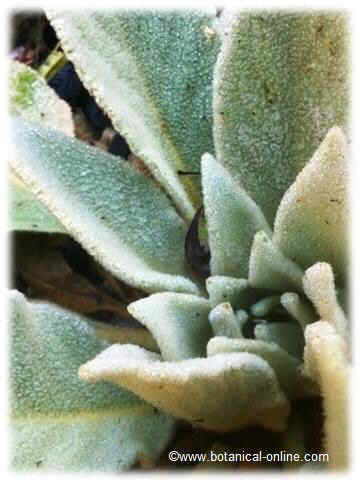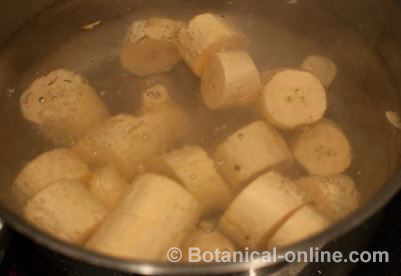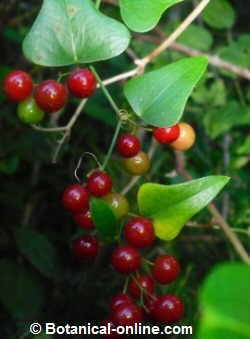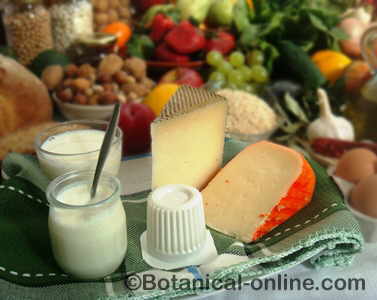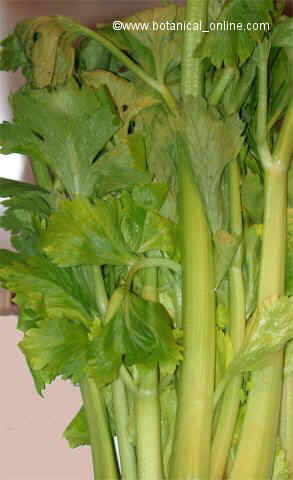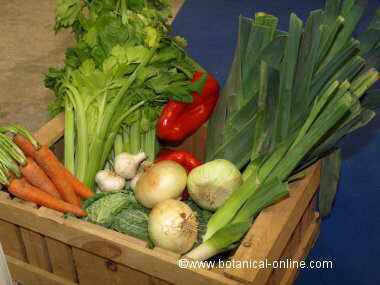Contents
High fiber foods
Fiber from foods
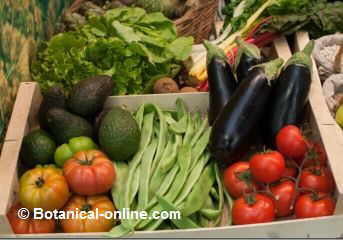
Foods that contain fiber are only those of plant origin. Fiber is not found in foods of animal origin. Vegetables can contain two types of fiber: so-called soluble fiber and insoluble fiber.
Most plant foods contain both types of fiber, being richer in one type of fiber or another.
For example, cereals and legumes are very rich in insoluble fiber, while fruits and vegetables are richer in soluble fiber.
* More information: Types of fiber
How much fiber should you take a day?
The recommended daily intake of fiber for a healthy diet is 25 to 30 grams of fiber for adults.
Fiber should be consumed from all types of foods, which provide both types of fiber, until reaching the recommended daily amount (RDA), that is estimated at 25 to 35g each day.
It is necessary to take into account the particular properties of each type of fiber in order to take advantage of them in the treatment of a specific anomaly.
The following article shows a list of foods rich in fiber, grouped according to whether it is soluble or insoluble and the main applications of each of them. For a more detailed study of fiber see the links in the link block.
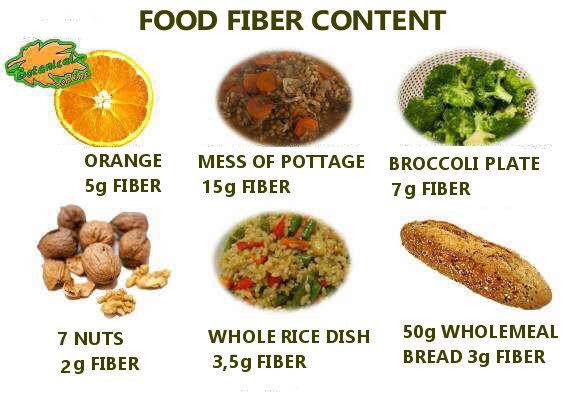
Sheet with the fiber content of some natural foods rich in fiber.
Foods rich in soluble fiber
Foods that contain soluble fiber are those that are most interesting especially for constipation, hemorrhoids, to control the level of cholesterol in the blood and to maintain stable sugar levels in diabetics. Among the foods richest in soluble fiber we can mention:
- Dried fruits: Among all of them, dried fruits stand out, such as raisins, plums, dried apricots, dried banana, fig bread, etc.
- Fruits: Fresh fruits are also a great source of fiber, especially those consumed with seeds: strawberries, kiwis, figs, raspberries, medlars, green bananas, raspberries, blackberries, apples, plums, pears, oranges, lemons, grapefruits and nectarines.
- Vegetables: Okras, nopal, broccoli, Brussels sprouts, peppers, beets, artichokes, potatoes, cucumbers, asparagus, aubergines, carrots, borage, squash, garlic, lettuce, cassava, spinach, chayote, tomatoes.
- Tubers: potato, sweet potato.
- Seeds: flax seeds, chia seeds, ispagol seeds and psyllium seeds stand out.
- Cereals: In general, they contain more insoluble fiber than soluble, except in the case of oats that provide soluble fiber beta-glucans.
Influence of cooking on the properties of the fiber
The type of culinary treatment that we apply to vegetables can improve the assimilation of fiber by the microbiota. For example, baked or compote apples
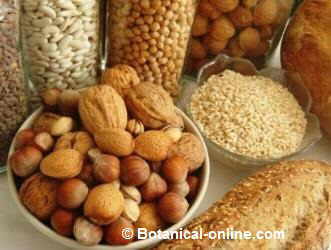
produce a highly fermentable type of pectin (it changes the conformation of the fiber, it is more gelatinous and has greater fermentation power).
On the other hand, another type of fiber that is very interesting for its prebiotic effect is resistant starch. It is achieved by cooking tubers and cereals (although especially potatoes and roots), and re-cooling them. For example, the potato is boiled, left to cool in the refrigerator, and then consumed (it can be reheated or eaten cold). This resistant starch is highly fermentable and has a prebiotic effect.
Insoluble Fiber-Containing Foods
Insoluble fiber is particularly interesting as a laxative, with more immediate effects than soluble fiber. Likewise, the ability of soluble and insoluble fiber to accelerate transit and get rid of harmful particles from the intestine helps reduce the risk of colon cancer. Among the foods richest in insoluble fiber we can mention:
- Cereals: especially whole grains. Among them, barley, oats, birdseed, brown rice, rye stand out.
- Legume; especially chickpeas, peas, soybeans, kidney beans, broad beans, lentils, etc.
- Nuts: walnuts, almonds, hazelnuts, Brazil nuts, cashews, pistachios, etc.
- Whole wheat bread
- Wheat bran
*See: Diet for intestinal flora
TABLE OF FOODS RICH IN FIBER
(The nutritional tables do not specify the type of fiber)
Table of fiber content of some foods (Recommended daily ration of 20 to 35 g) | |
| 1 cup cooked whole wheat barley | 8,8 g |
| ½ cup pinto beans | 6,4 g |
| 1 cup raspberries | 5,5 g |
| ½ cup white beans | 4,4 g |
| 1 pear | 4.6 g |
| 1 cup blackberries | 4 g |
| ½ cup cooked peas | 4 g |
| ½ cup broccoli | 3,6 g |
| 2 slices whole wheat bread | 3,2 g |
| ½ cup Brussels sprouts | 3 g |
| 5 prunes | 3 g |
| 1 orange | 3 g |
| 1 apple | 3 g |
| 1 cooked small sweet potato | 3 g |
| 1 cup strawberries | 2,7 g |
| ¾ cup of cooked brown rice | 2,5 g |
| ½ cup cooked carrots | 2,5 g |
| ½ cup cooked spinach | 2,2 g |
| ½ cup cooked oatmeal | 2, 2 g |
| 1 small baked potato with skin | 2,2 g |
| ½ cup cooked corn | 1,7 g |
| 2 tablespoons sprouted wheat | 1,5 g |
| 2 tablespoons wheat bran | 1 g |
Related information:
– Chia seeds very rich in fiber
– Will I lose fat eating fiber?
![]() More information on the properties of fiber and a diet rich in fiber
More information on the properties of fiber and a diet rich in fiber

